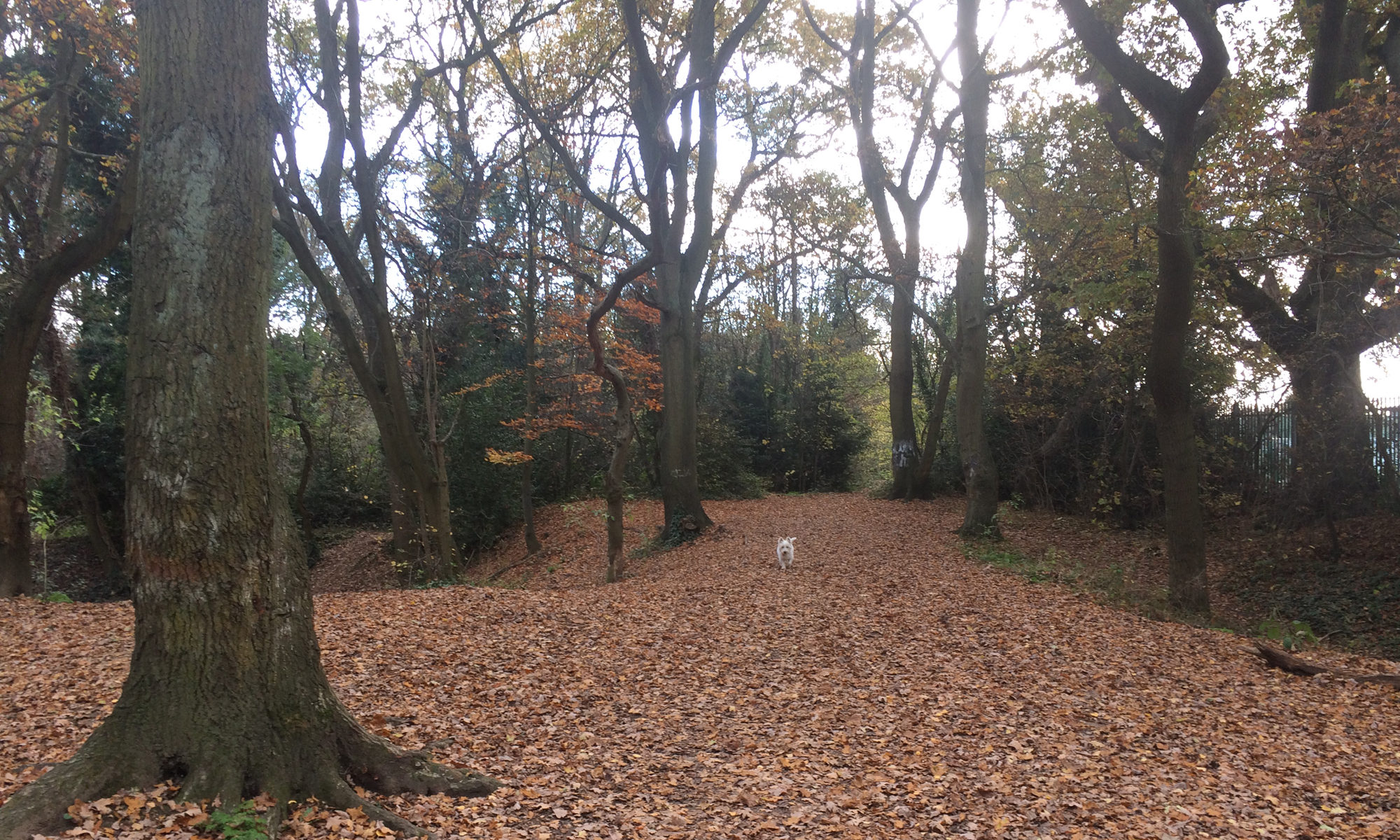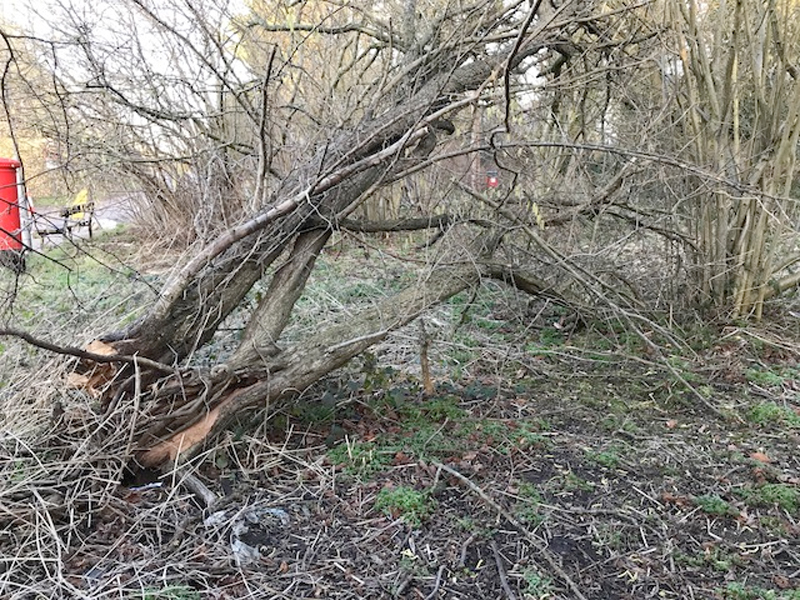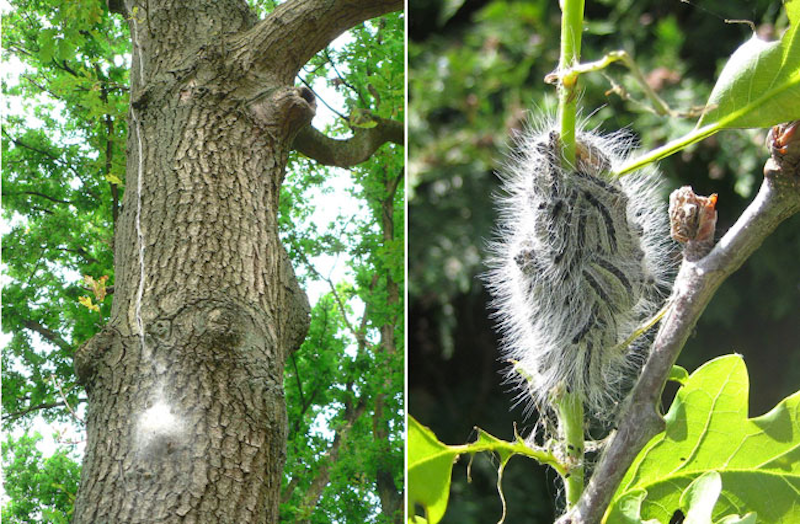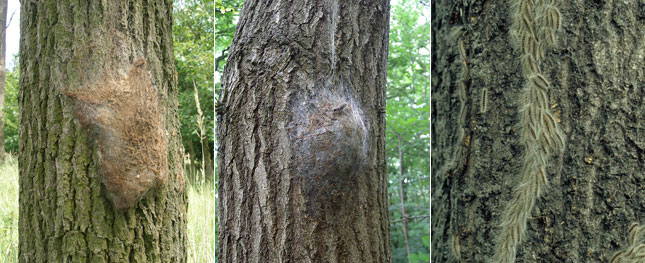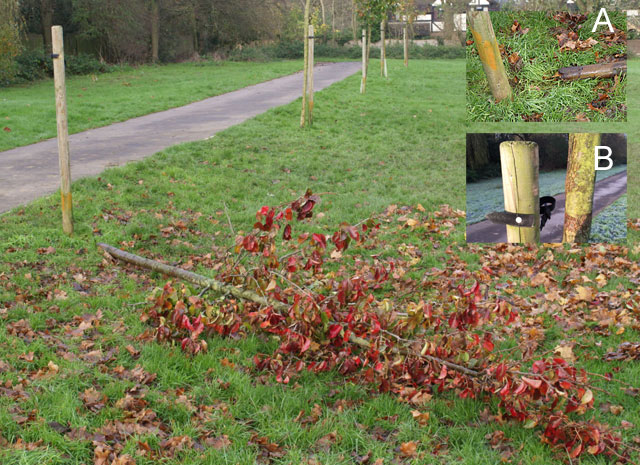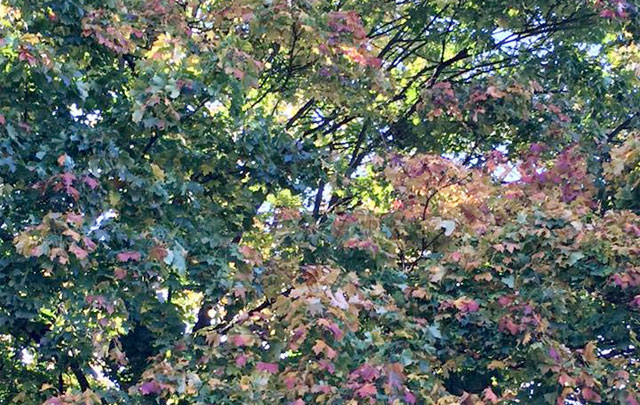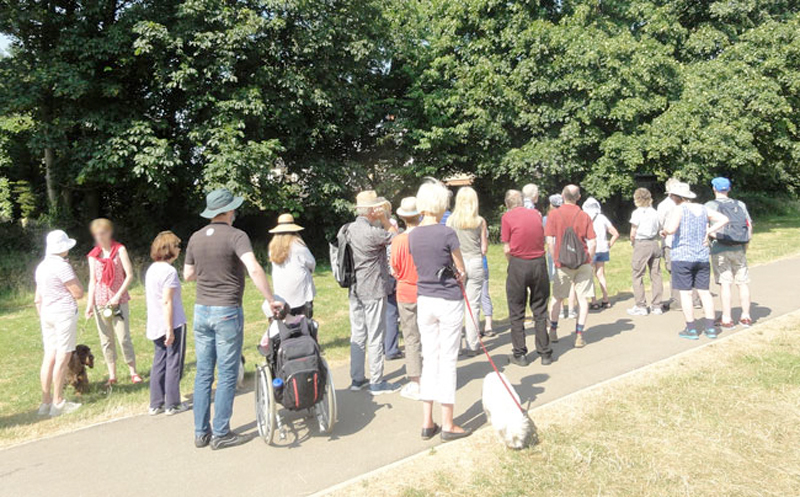
The first Friends of Bernards Heath Tree Walk on Sunday 1st July was led by Roger Miles and as you can see from the photo attracted a group of over 20 people.
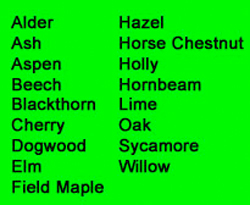
We explored several areas of woodland to the East and West of Harpenden Road finding examples of the trees in the list, (probably not exhaustive). Sadly, there appear to be a few examples of Ash dieback on young trees in the area.
Below are two examples of trees you might like to look out for. On the left there are a few Hornbeams with their characteristic ribbed trunks near Heath Farm Lane (there are many more in Beech Bottom Dyke). On the right, Aspen, the tree with its fluttering leaves, on a path closer to the old Fire Station.
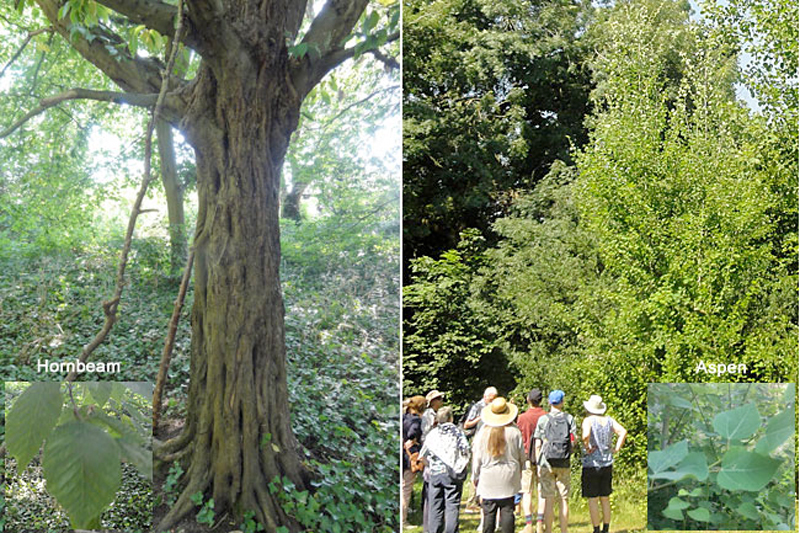
Many thanks to Roger Miles of the Friends of Bernards Heath Committee for giving us the benefit of his exhaustive knowledge of the flora on the Heath.
